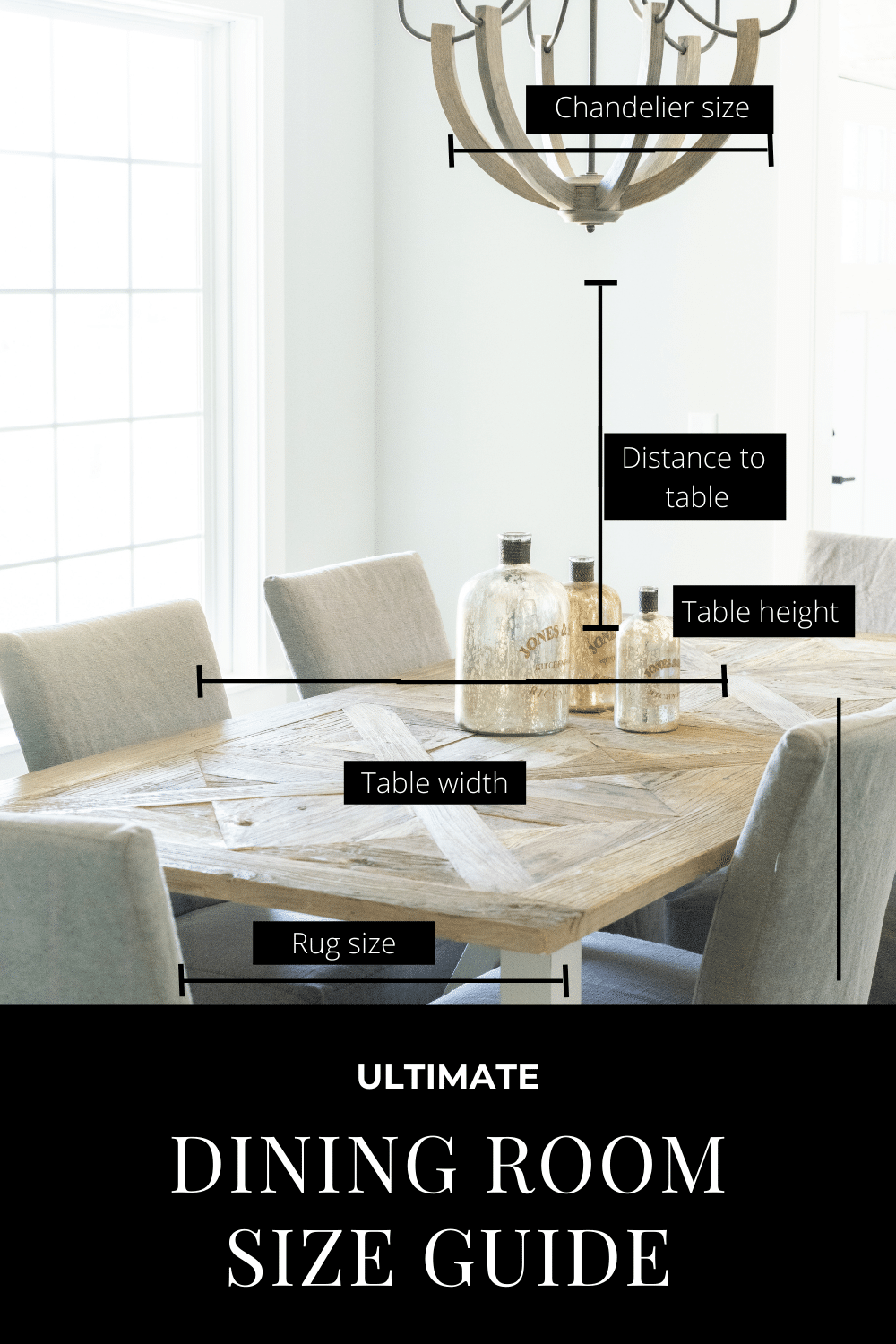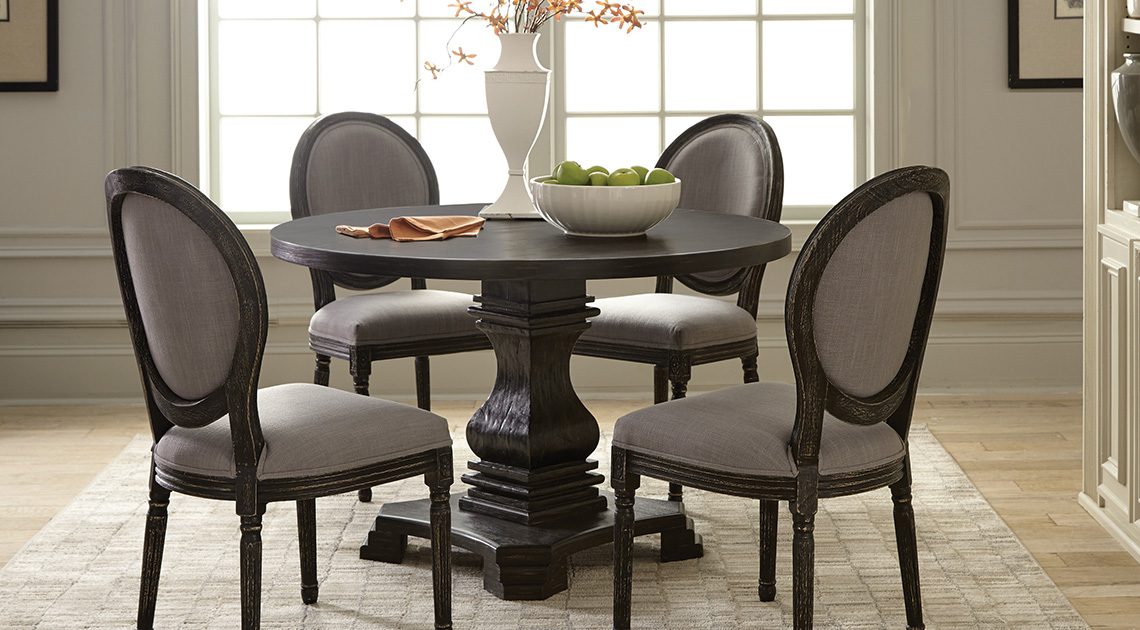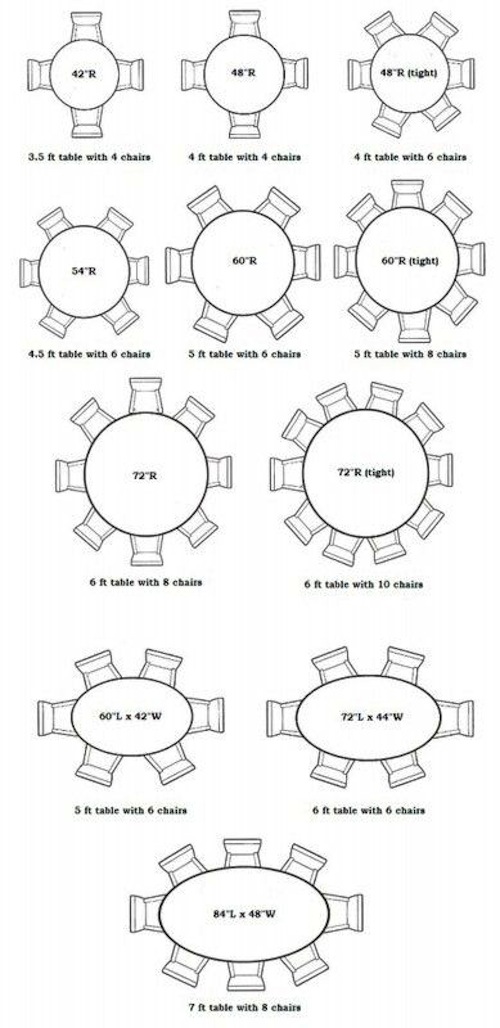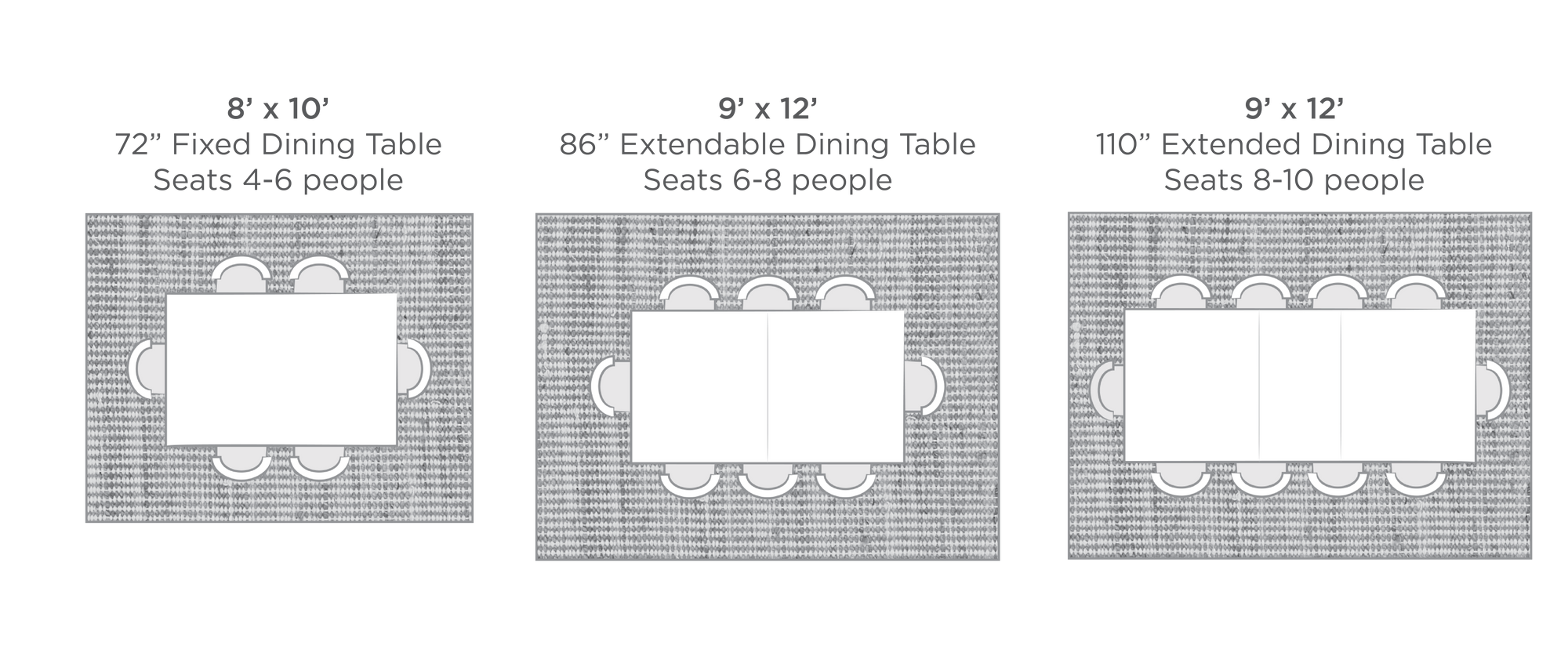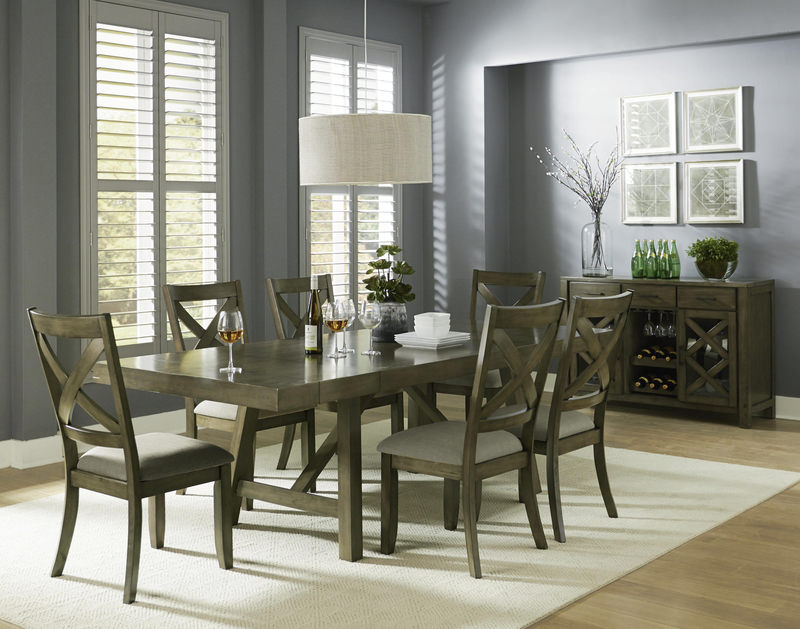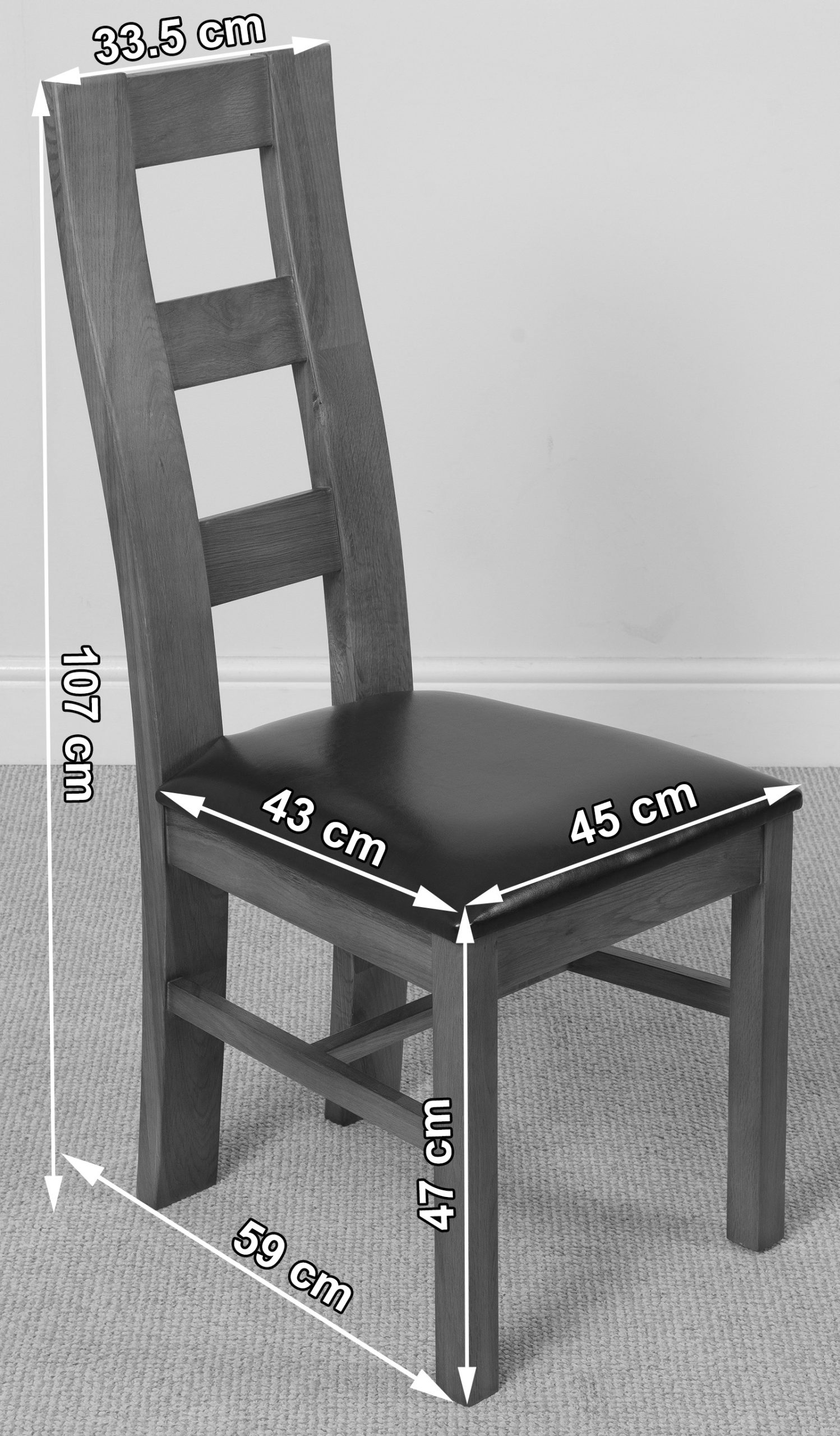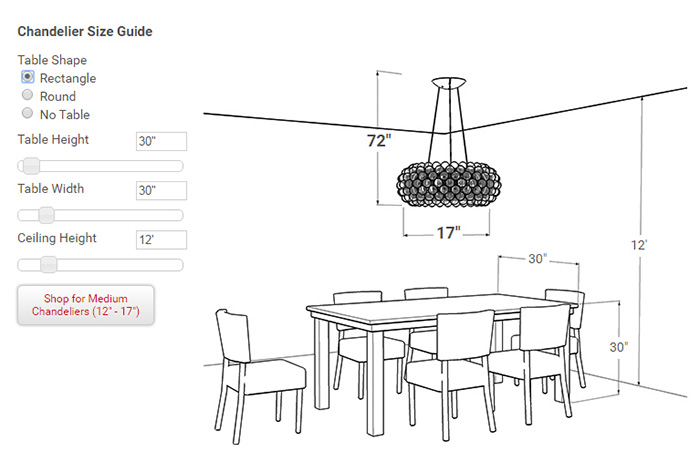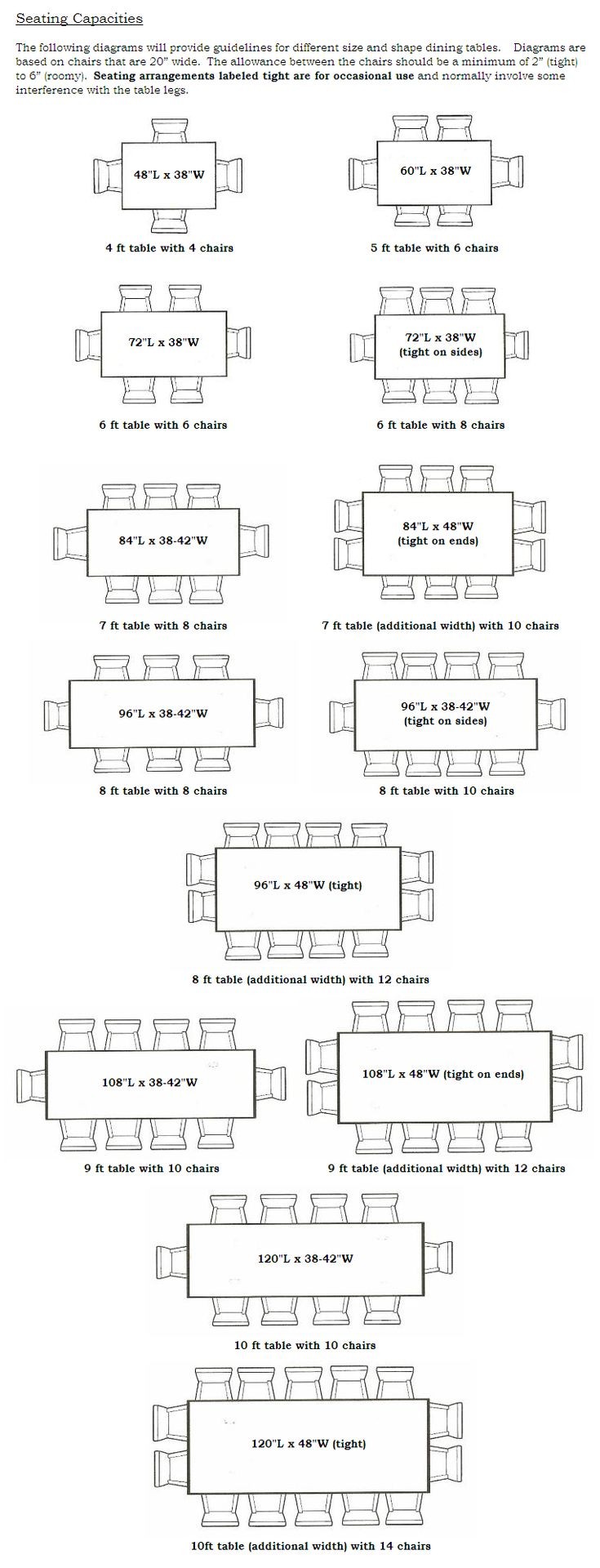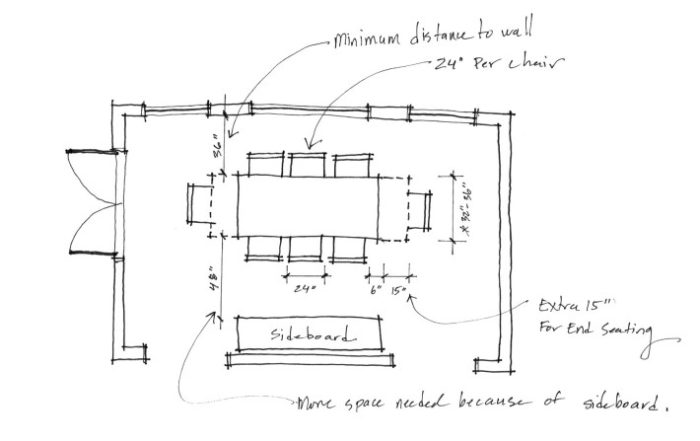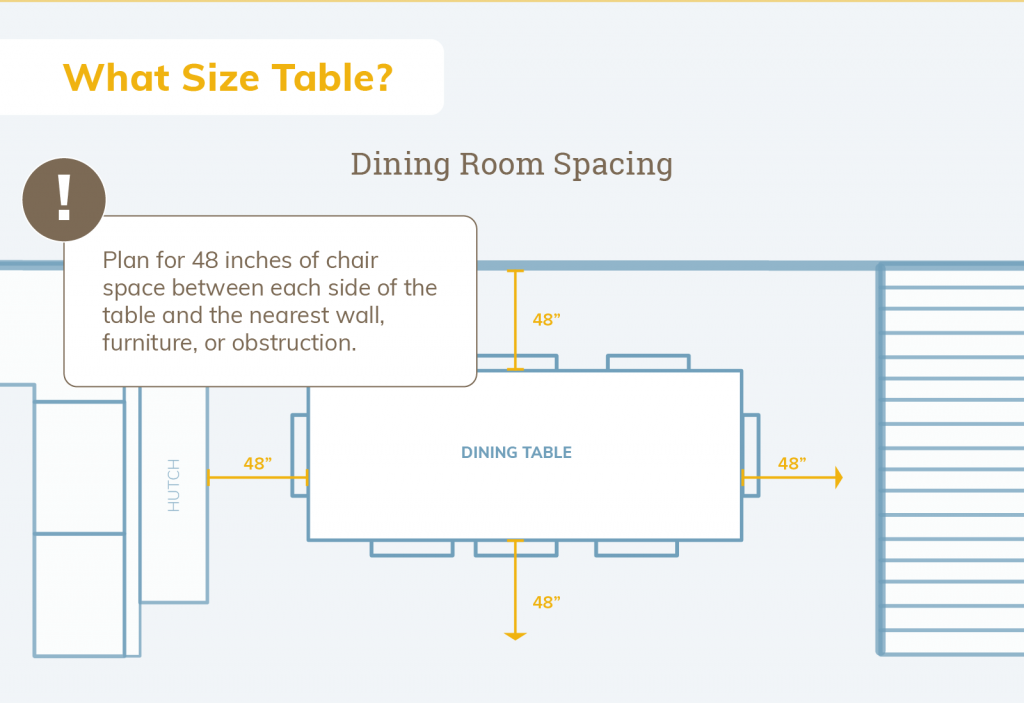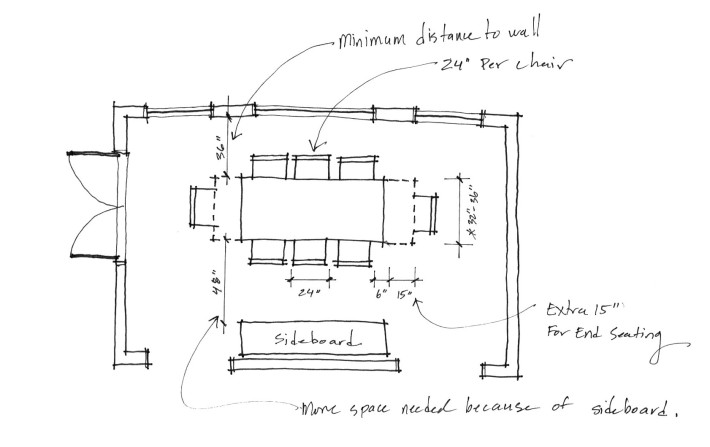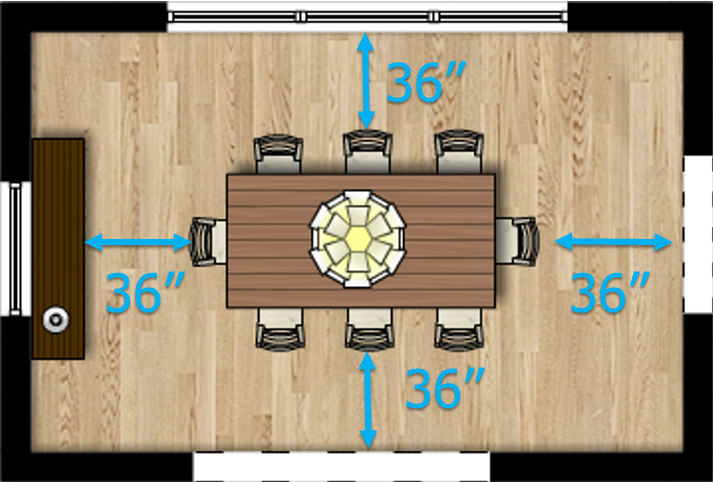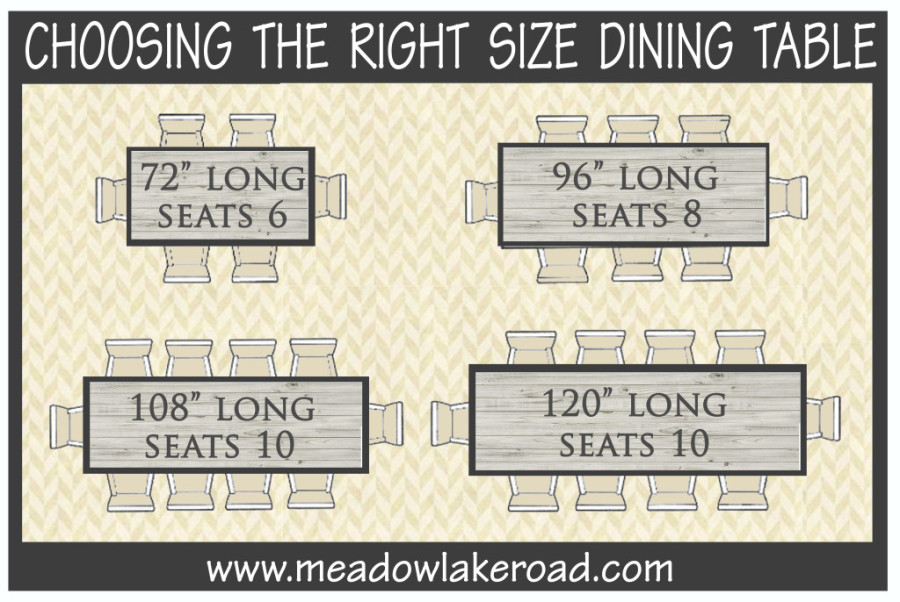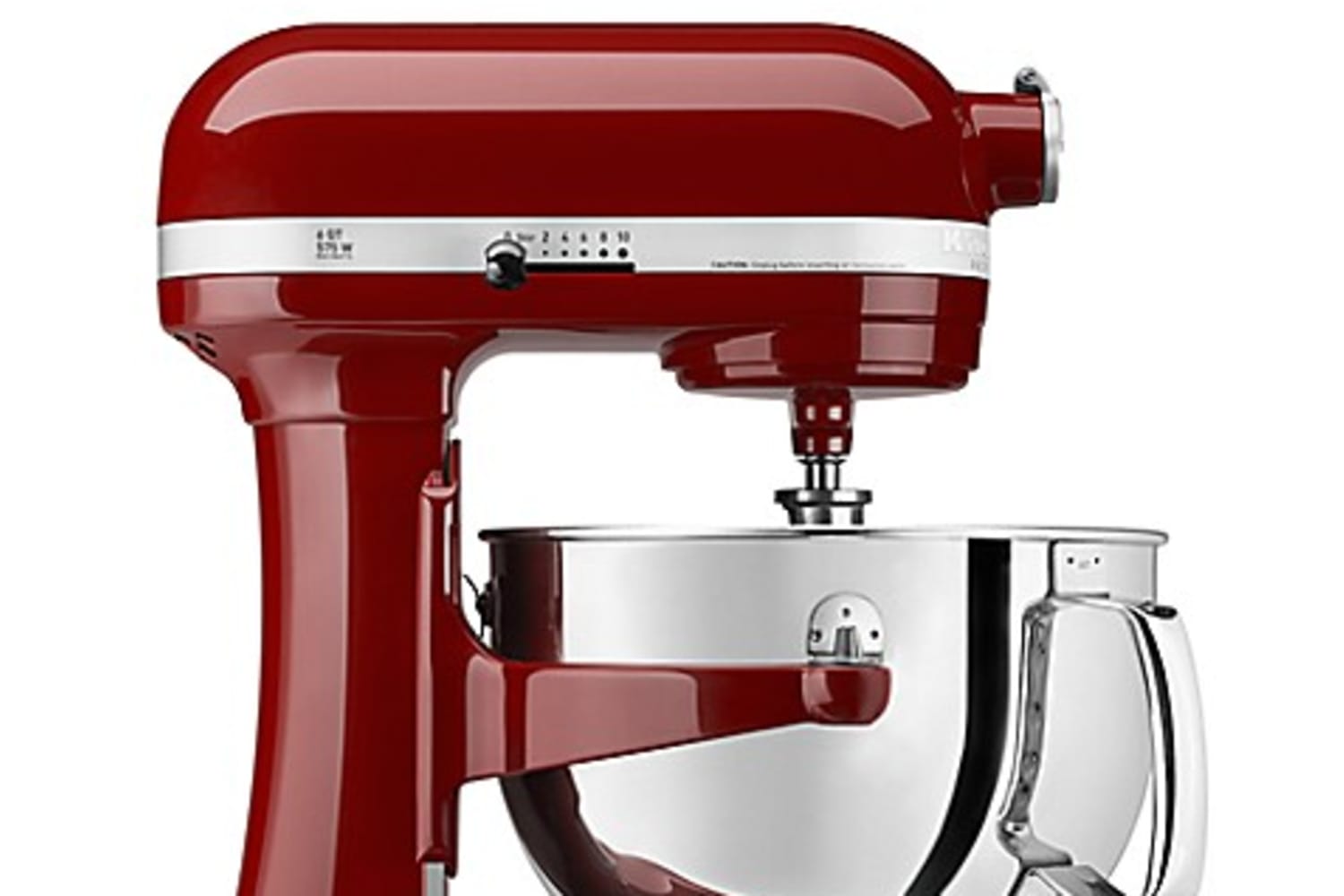Average Dining Room Size
When it comes to designing or renovating a dining room, one of the most important things to consider is the size of the space. The size of your dining room can greatly impact the overall look and feel of the room, as well as the functionality. If you're wondering what the average size for a dining room is, you've come to the right place. In this article, we will explore the standard dimensions, ideal size, and other important factors to consider when determining the size of your dining room.
Standard Dining Room Dimensions
While there is no one-size-fits-all answer when it comes to the perfect dining room size, there are some standard dimensions that can serve as a helpful guide. The average dining room in the United States is around 14 feet by 16 feet, or 224 square feet. However, this can vary depending on the size of your home and personal preferences.
Some experts recommend that a dining room should be at least 11 feet by 11 feet to comfortably fit a table and chairs. This allows enough space for people to move around and pull out chairs without feeling cramped. However, if you have a larger family or frequently entertain guests, you may want to consider a larger dining room to accommodate for more seating.
Ideal Dining Room Size
While the standard dining room dimensions can serve as a useful guideline, the ideal size for your dining room will ultimately depend on your lifestyle and needs. For example, if you have a formal dining room that is primarily used for special occasions, a smaller size may be sufficient. On the other hand, if your dining room is used for everyday meals and family gatherings, you may want to consider a larger size.
Another factor to consider is the size of your dining table. The ideal size for a dining table is typically 36 inches wide and 72 inches long, but this can vary depending on the number of people you want to seat and the shape of the table. Be sure to factor in the size of your table when determining the ideal dining room size for your needs.
Dining Room Square Footage
Square footage is an important aspect to consider when determining the size of your dining room. As a general rule, each person should have at least 24 inches of space at the dining table. This means a 10-foot by 12-foot dining room can comfortably seat six people, while a 14-foot by 14-foot dining room can seat eight people.
However, it's also important to consider the flow of the room. If your dining room is connected to other areas of your home, you may need to account for additional space for walkways and traffic flow. You'll also want to ensure that there is enough space between the dining table and walls or other furniture for people to comfortably move around.
Dining Room Size Guide
If you're still unsure about the ideal size for your dining room, there are some general guidelines you can follow. For a small dining room, aim for a minimum of 10 feet by 10 feet, which can comfortably fit a four-person table. For a medium-sized dining room, 12 feet by 12 feet is a good starting point, which can accommodate a six-person table. And for a larger dining room, aim for at least 14 feet by 16 feet, which can fit a table for eight or more people.
It's also important to consider the ceiling height in your dining room. Higher ceilings can make a room feel more spacious, while lower ceilings can make a room feel cozier. If you have high ceilings, you may be able to get away with a slightly smaller dining room size.
Dining Room Size Calculator
If you want a more precise calculation for your dining room size, there are online calculators available that can help. These calculators take into account the number of people you want to seat, the shape of your dining table, and the amount of space needed for walkways and furniture. They can provide you with a recommended dining room size based on your specific needs.
Keep in mind that these calculators are just a guide and may not account for all factors, so it's still important to use your own judgment and preferences when determining the size of your dining room.
Dining Room Size Chart
Here's a helpful chart that outlines the recommended dining room size based on the number of people you want to seat:
Dining Room Size Recommendations
Ultimately, the best dining room size for your home will depend on your personal preferences and needs. However, there are some general recommendations to keep in mind when determining the size of your dining room:
Dining Room Size Requirements
While there are no strict requirements for the size of a dining room, there are some building codes and regulations that may impact the size of your dining room. For example, some municipalities may require a minimum size for habitable rooms, which could include a dining room. It's important to check with your local building codes before making any renovations or additions to your home.
Dining Room Size Standards
There are also some general standards to keep in mind when it comes to the size of a dining room. For example, a dining room should be large enough to comfortably fit a dining table, chairs, and other furniture without feeling cramped. It should also have enough space for people to move around and pull out chairs without bumping into walls or other furniture.
Ultimately, the size of your dining room will depend on your personal preferences and needs. Use these guidelines and recommendations to help you determine the best size for your dining room and create a space that is functional, comfortable, and visually appealing.
The Importance of Having a Spacious Dining Room in Your Home
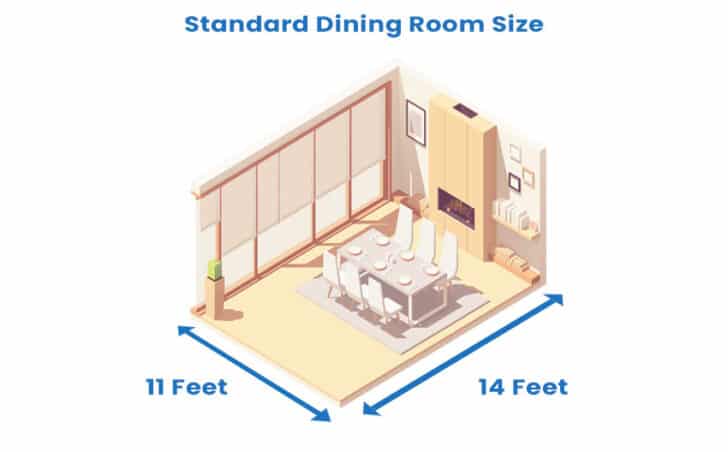
The dining room is a crucial space in any home
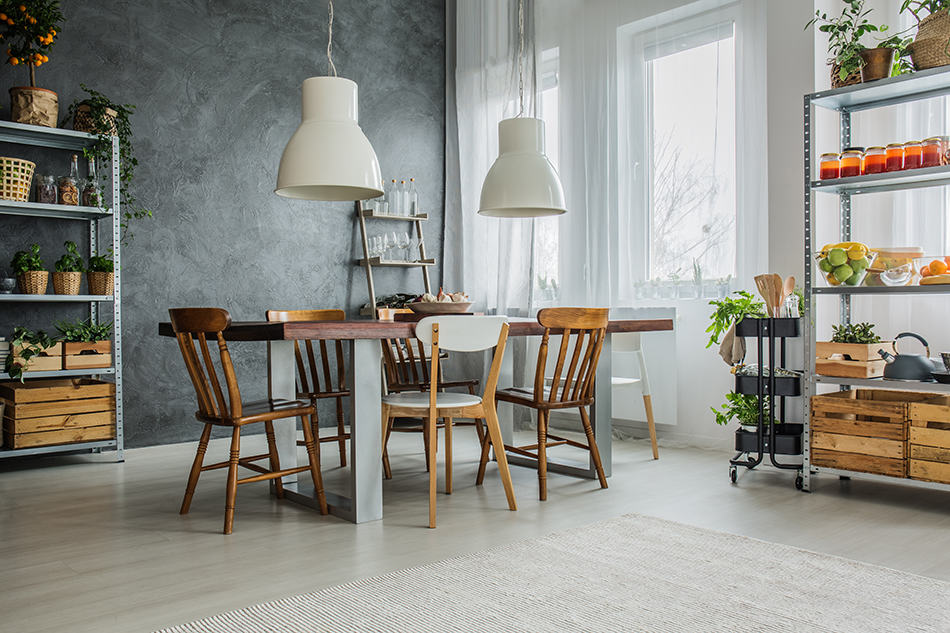 When designing a house, one of the most important factors to consider is the size of the dining room. This is because the dining room is not just a place to eat, but also a space for gathering and creating memories with family and friends. It is where we celebrate special occasions, have meaningful conversations, and share delicious meals. Therefore, the size of the dining room can greatly impact the overall atmosphere and functionality of a home.
Average Size for a Dining Room
The average size for a dining room varies depending on the size of the house and the number of people living in it. However, the general rule of thumb is to have at least 12 square feet of dining space per person. This means that for a family of four, the dining room should be at least 48 square feet. Additionally, there should be enough space around the dining table for chairs to comfortably fit and for people to move around without feeling cramped.
When designing a house, one of the most important factors to consider is the size of the dining room. This is because the dining room is not just a place to eat, but also a space for gathering and creating memories with family and friends. It is where we celebrate special occasions, have meaningful conversations, and share delicious meals. Therefore, the size of the dining room can greatly impact the overall atmosphere and functionality of a home.
Average Size for a Dining Room
The average size for a dining room varies depending on the size of the house and the number of people living in it. However, the general rule of thumb is to have at least 12 square feet of dining space per person. This means that for a family of four, the dining room should be at least 48 square feet. Additionally, there should be enough space around the dining table for chairs to comfortably fit and for people to move around without feeling cramped.
The Benefits of a Spacious Dining Room
 Having a spacious dining room has several benefits that go beyond just having enough room for a dining table and chairs. Firstly, it allows for better traffic flow, making it easier for people to move around and serve food during gatherings. This also creates a more comfortable and welcoming atmosphere for guests.
Moreover, a spacious dining room provides flexibility in terms of furniture arrangement. If you need to accommodate more people for a special occasion, having extra space in the dining room allows for the addition of more chairs or even a buffet table. This also allows for the dining room to be used for other purposes, such as a workspace or a place for kids to do homework.
Creating a Welcoming and Functional Dining Room
When designing a dining room, it is important to consider not just the size, but also the layout and overall aesthetic. To create a welcoming and functional dining room, it is recommended to have a mix of different lighting sources, such as overhead lights and table lamps, to create a warm and inviting atmosphere. Additionally, incorporating natural elements, such as plants or a large window, can add a touch of freshness to the space.
In conclusion, the size of a dining room plays a crucial role in the overall design and functionality of a home. It is important to carefully consider the average size and layout to create a space that is both inviting and practical. With a well-designed and spacious dining room, you can create a special place in your home where memories are made and cherished for years to come.
Having a spacious dining room has several benefits that go beyond just having enough room for a dining table and chairs. Firstly, it allows for better traffic flow, making it easier for people to move around and serve food during gatherings. This also creates a more comfortable and welcoming atmosphere for guests.
Moreover, a spacious dining room provides flexibility in terms of furniture arrangement. If you need to accommodate more people for a special occasion, having extra space in the dining room allows for the addition of more chairs or even a buffet table. This also allows for the dining room to be used for other purposes, such as a workspace or a place for kids to do homework.
Creating a Welcoming and Functional Dining Room
When designing a dining room, it is important to consider not just the size, but also the layout and overall aesthetic. To create a welcoming and functional dining room, it is recommended to have a mix of different lighting sources, such as overhead lights and table lamps, to create a warm and inviting atmosphere. Additionally, incorporating natural elements, such as plants or a large window, can add a touch of freshness to the space.
In conclusion, the size of a dining room plays a crucial role in the overall design and functionality of a home. It is important to carefully consider the average size and layout to create a space that is both inviting and practical. With a well-designed and spacious dining room, you can create a special place in your home where memories are made and cherished for years to come.



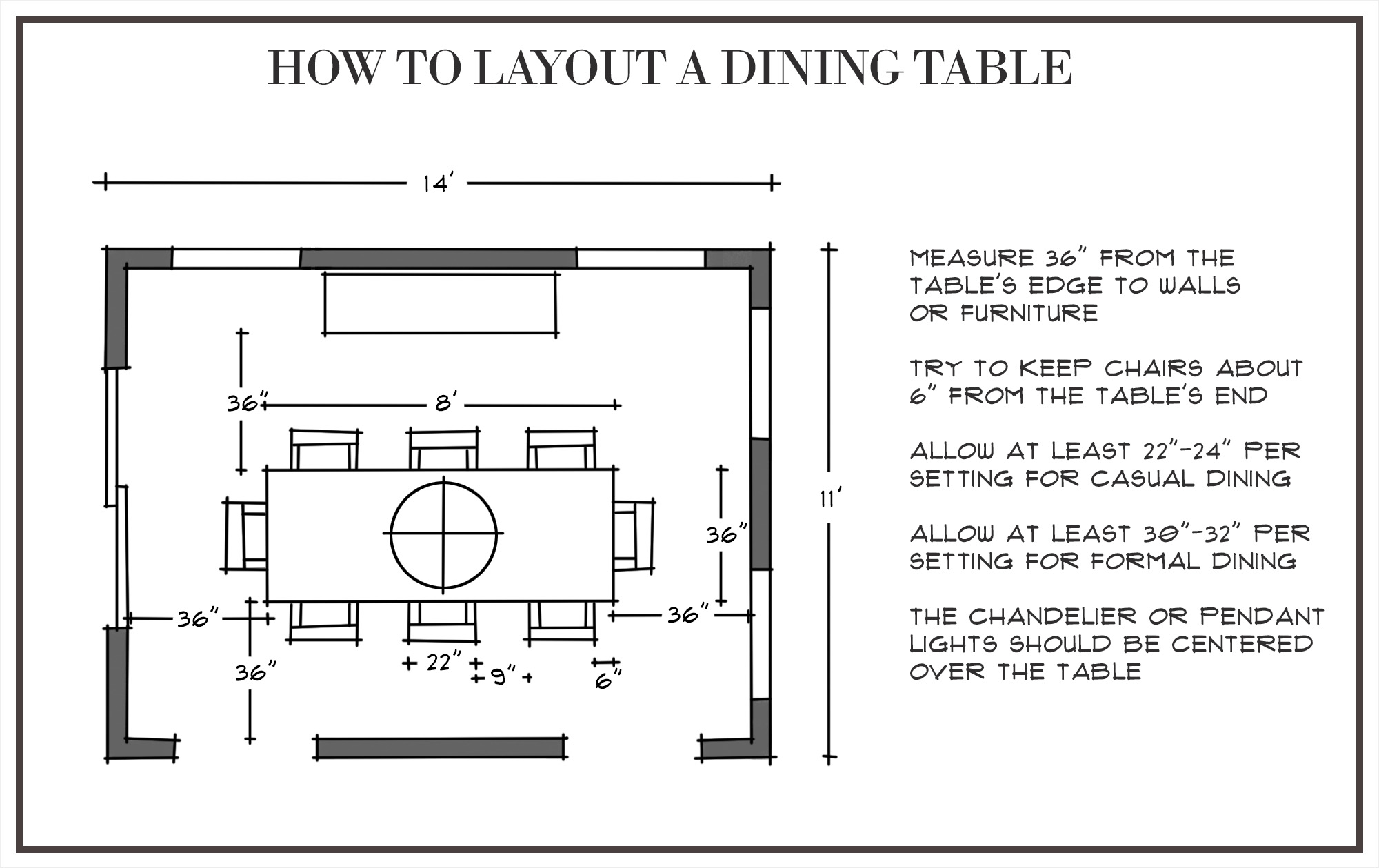









:max_bytes(150000):strip_icc()/standard-measurements-for-dining-table-1391316-FINAL-5bd9c9b84cedfd00266fe387.png)



